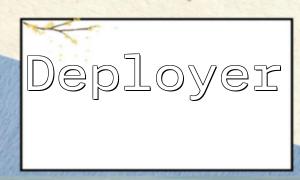During PHP development, encountering runtime errors is common — such as missing files or failed database connections. To improve debugging efficiency and code robustness, it’s essential to master PHP's exception handling and error reporting mechanisms. This article explains the key methods for handling exceptions in PHP and provides practical code examples to help you implement them effectively.
PHP provides the try-catch construct to handle exceptions. Code that might trigger an exception is placed inside a try block, while the catch block handles any thrown exceptions. You can define multiple catch blocks to address different types of exceptions.
Here’s a basic example:
try {
// Code that might throw an exception
} catch (Exception $e) {
// Handle the exception
}
For more fine-grained control over exception types and messages, you can create custom exception classes by extending PHP’s built-in Exception class. This allows you to define domain-specific exceptions and provide tailored error information.
Example:
class MyException extends Exception {
public function __construct($message, $code = 0) {
parent::__construct($message, $code);
}
public function __toString() {
return __CLASS__ . ": [{$this->code}]: {$this->message}\n";
}
public function customFunction() {
echo "Functionality from the custom exception class\n";
}
}
Throwing and catching a custom exception looks like this:
try {
throw new MyException("A custom exception occurred");
} catch (MyException $e) {
echo $e;
$e->customFunction();
}
In addition to exception handling, enabling detailed error messages during development is essential. PHP provides several tools for controlling how errors are reported and displayed.
The error_reporting() function sets the level of error reporting. Common usage includes:
error_reporting(0); // Suppress all error messages error_reporting(E_ALL); // Report all types of errors error_reporting(E_ERROR | E_WARNING); // Report only fatal errors and warnings
For development, use E_ALL to get complete visibility. In production, limit the output to avoid revealing sensitive information.
The ini_set() function allows you to change PHP configuration settings at runtime — particularly useful for controlling error behavior in scripts:
ini_set('display_errors', 'On'); // Show error messages
ini_set('display_startup_errors', 'On'); // Show errors during PHP startup
ini_set('log_errors', 'On'); // Log errors to a file
ini_set('error_log', '/path/to/error_log'); // Specify error log file path
By combining error_reporting with ini_set, you can tailor error visibility to suit different environments (development vs. production).
Effectively using try-catch, custom exception classes, and configuring detailed error output allows you to build more robust PHP applications and accelerate the debugging process. By applying these best practices, developers can write cleaner code, catch issues early, and ensure a better user experience in both testing and production environments.









